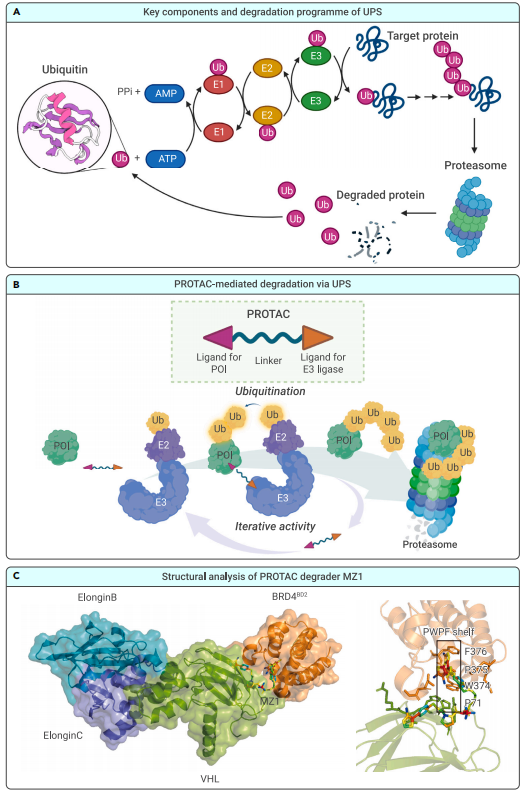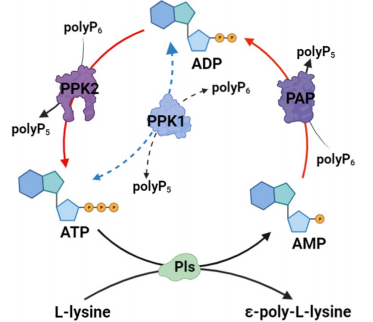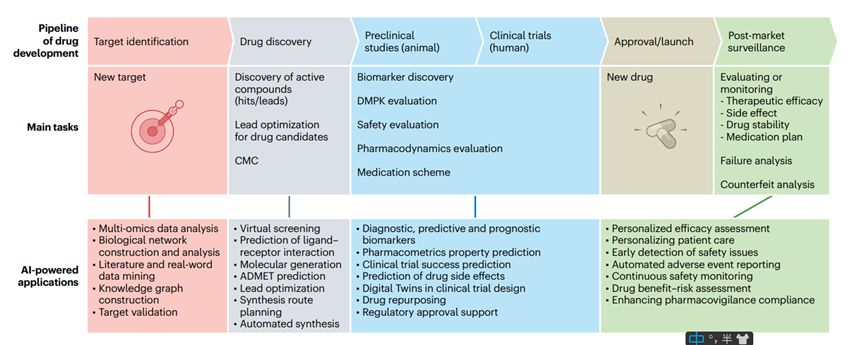From Target Validation to Drug Discovery: The Role of Small Molecule Chemical Probes
Abstract
Small molecule chemical probes are essential tools in modern biomedical research, offering targeted, reversible modulation of specific proteins or pathways. Unlike drugs, these probes are designed primarily for research purposes — enabling scientists to validate drug targets, dissect signaling networks, and understand disease mechanisms with precision. This blog post explores what chemical probes are, how they work, their defining features, and their applications across cancer, neuroscience, immunology, and beyond. It also introduces best practices for selecting and using probes, showcases notable examples like JQ1 and GSK-J4, and highlights emerging trends such as AI-driven probe discovery and systems-level integration. With open-access platforms and collaborative science driving the field forward, small molecule probes are unlocking new frontiers in molecular biology and translational medicine.
What Are Small Molecule Chemical Probes?
In the vast world of biomedical research, small molecule chemical probes are unsung heroes quietly powering some of the biggest discoveries. But what exactly are they?
At their core, chemical probes are small, synthetic molecules designed to interact with specific proteins, enzymes, or signaling pathways within living cells. Think of them as precision tools — like molecular “on-off switches” — that allow scientists to temporarily activate or shut down the function of a particular biological target. This lets researchers study how that target affects cell behavior, disease progression, or response to treatment.
Unlike traditional drugs, which are developed to treat diseases in patients, chemical probes are used primarily as research tools. They help scientists ask and answer fundamental biological questions: What happens if we inhibit this protein? Does this pathway trigger inflammation? Can this enzyme be a viable cancer target?
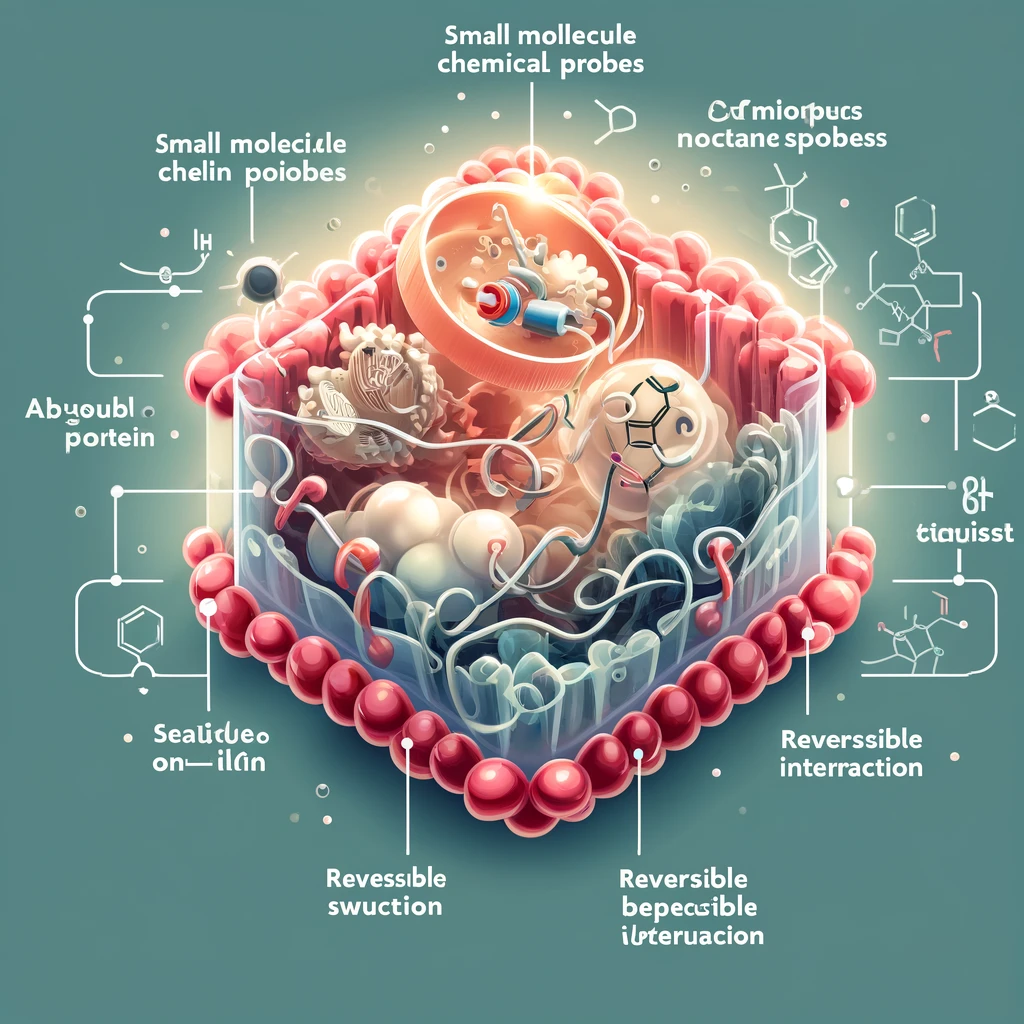
What makes chemical probes so powerful is their high specificity and reversible action. When used properly, they can isolate the function of a single molecule within complex systems like cells or tissues — without altering the organism’s genome. This makes them a popular alternative (or complement) to genetic editing techniques like CRISPR.
In recent years, the demand for high-quality chemical probes has surged, driven by the growing need for target validation in drug discovery and precision medicine. With open-access resources and curated probe libraries now widely available, even smaller labs can harness these tools to explore uncharted biological territory.
Whether you’re a scientist, biotech innovator, or simply a curious reader, understanding small molecule chemical probes opens the door to how modern science deciphers the secrets of life — one molecule at a time.
Why Small Molecule Probes Matter
In the world of biomedical research, small molecule probes are essential for unlocking the secrets of biology and disease. Their value lies in their ability to help scientists pinpoint how individual proteins or pathways influence cell behavior — without permanently altering DNA or requiring complex genetic tools.
One of the most important uses of chemical probes is target validation. Before investing millions into developing a new drug, researchers must confirm that a protein or enzyme truly drives a disease. Probes act like test runs: they temporarily block or modulate a target’s activity to observe what happens. If the desired effect occurs, the target is validated — making it a candidate for drug development.
Probes are also central to phenotypic screening, where researchers apply hundreds or thousands of molecules to cells to find those that produce a specific biological effect. This approach can uncover new targets or pathways previously unknown.
Moreover, chemical probes are widely used in basic research, helping scientists understand processes like cell division, gene expression, and immune signaling. Their precision, reversibility, and scalability make them superior to many genetic tools in certain contexts.
How Small Molecule Probes Work
Small molecule chemical probes work by selectively binding to a specific protein or enzyme to alter its function — either inhibiting, activating, or modifying it. This temporary and targeted interaction allows researchers to observe how cells respond when that biological switch is flipped on or off.
Most probes work through non-covalent interactions, meaning they bind reversibly to their target. This allows scientists to control the timing and dosage of the probe’s effect, mimicking real-world therapeutic scenarios. In some cases, probes may form covalent bonds, creating irreversible effects that are useful for long-term inhibition studies.
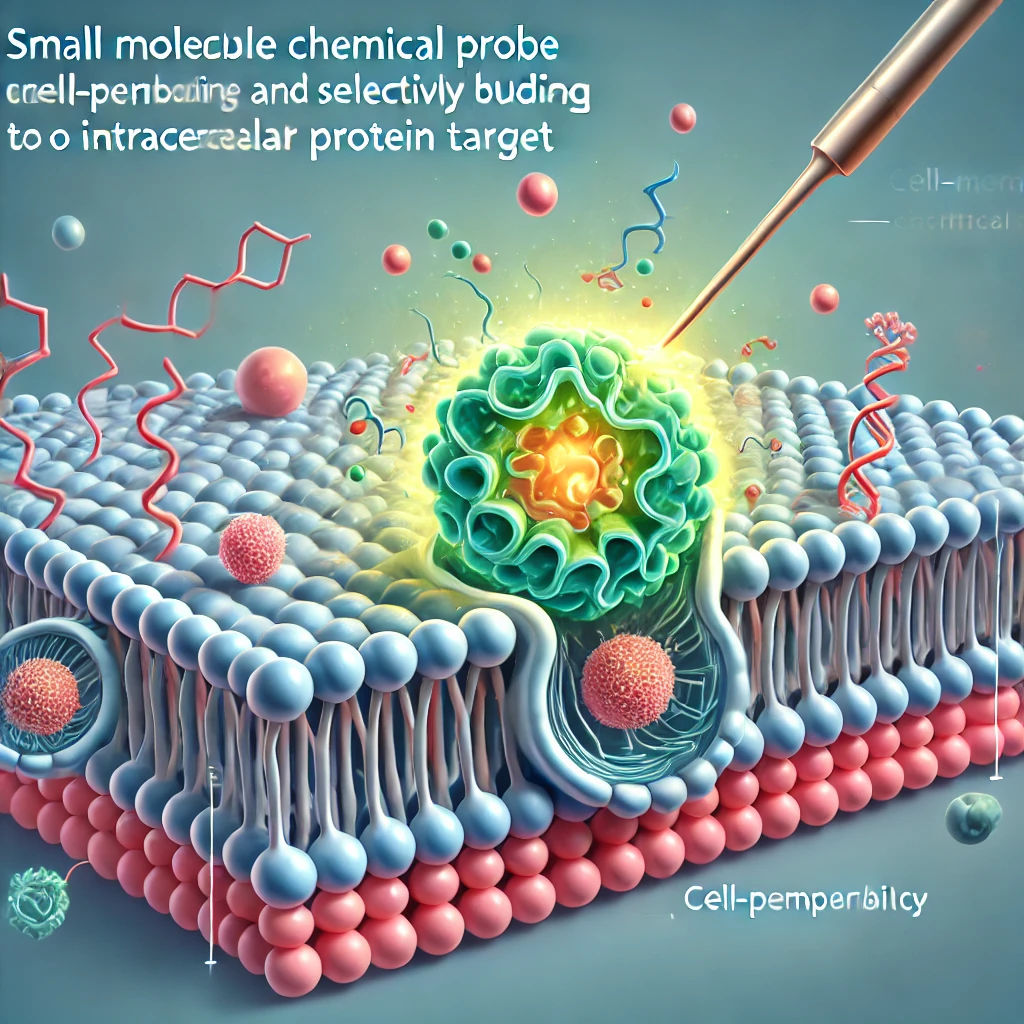
What sets probes apart is their ability to enter cells and tissues without needing viral vectors or gene editing machinery. Once inside, they act rapidly, enabling time-sensitive experiments. Some probes are designed to be light-sensitive or pH-sensitive, giving even more control over when and where they’re activated.
Importantly, a high-quality probe targets only one protein or a closely related group, avoiding interference with other cellular functions. This specificity is what makes them such powerful tools for isolating the role of a single gene or pathway in complex systems like cancer, neurodegeneration, or inflammation.
Key Characteristics of a Good Chemical Probe
Not all small molecule probes are created equal. To be effective and reliable in research, a high-quality chemical probe must meet specific scientific standards. These ensure that the results generated from using the probe are accurate, reproducible, and meaningful.
The most critical characteristic is high selectivity. A good probe should bind primarily to its intended target, minimizing interactions with other proteins that could lead to misleading results. Without selectivity, it’s difficult to determine whether the observed biological effect is truly due to the target in question.
Equally important is potency — typically, probes should have activity in the low nanomolar range. This allows researchers to use small concentrations while still achieving strong biological effects.
A good probe is also cell-permeable, meaning it can cross the cell membrane to reach its intracellular target. It must be stable in biological environments and have a known and well-characterized mechanism of action.
Finally, reversibility is often preferred, allowing scientists to “switch off” the probe after its effect has been studied.
Using poor-quality or unvalidated probes can lead to false conclusions, wasting time and resources. That’s why many researchers now consult curated databases to ensure they’re using probes that meet gold-standard criteria.
Real-World Examples of Popular Chemical Probes
Over the past decade, several small molecule chemical probes have become gold standards in biomedical research. These probes have helped unlock the functions of key proteins in diseases such as cancer, inflammation, and neurodegeneration. Below are some widely used probes that highlight how these molecules are revolutionizing scientific discovery.
| Probe Name | Target | Biological Role | Research Area |
|---|---|---|---|
| JQ1 | BRD4 (BET protein) | Regulates gene expression via chromatin | Cancer, epigenetics |
| GSK-J4 | JMJD3/UTX | Histone demethylase (H3K27me3) | Inflammation, epigenetics |
| BAY 11-7082 | IκB-α phosphorylation | NF-κB signaling pathway | Inflammation, immune response |
| MLN8237 | Aurora A kinase | Regulates mitotic spindle assembly | Cell cycle, oncology |
| THZ1 | CDK7 | Transcription initiation | Cancer, transcription control |
| C646 | p300/CBP HAT | Histone acetylation | Epigenetic regulation |
| VX-765 | Caspase-1 | Inflammasome activation | Autoimmune disease |
These probes are typically well-characterized and available through open-access resources like the Chemical Probes Portal or the Structural Genomics Consortium (SGC).
By using such validated tools, researchers gain confidence that their experimental results are driven by true biological effects, not off-target noise. These probes not only accelerate our understanding of disease mechanisms but often inspire the development of novel therapeutic candidates.
Applications Across Biology & Medicine
Small molecule chemical probes are transforming how we understand and treat disease, playing a pivotal role across numerous fields of biomedical science. Their ability to modulate specific proteins with precision makes them essential for both basic research and translational medicine.
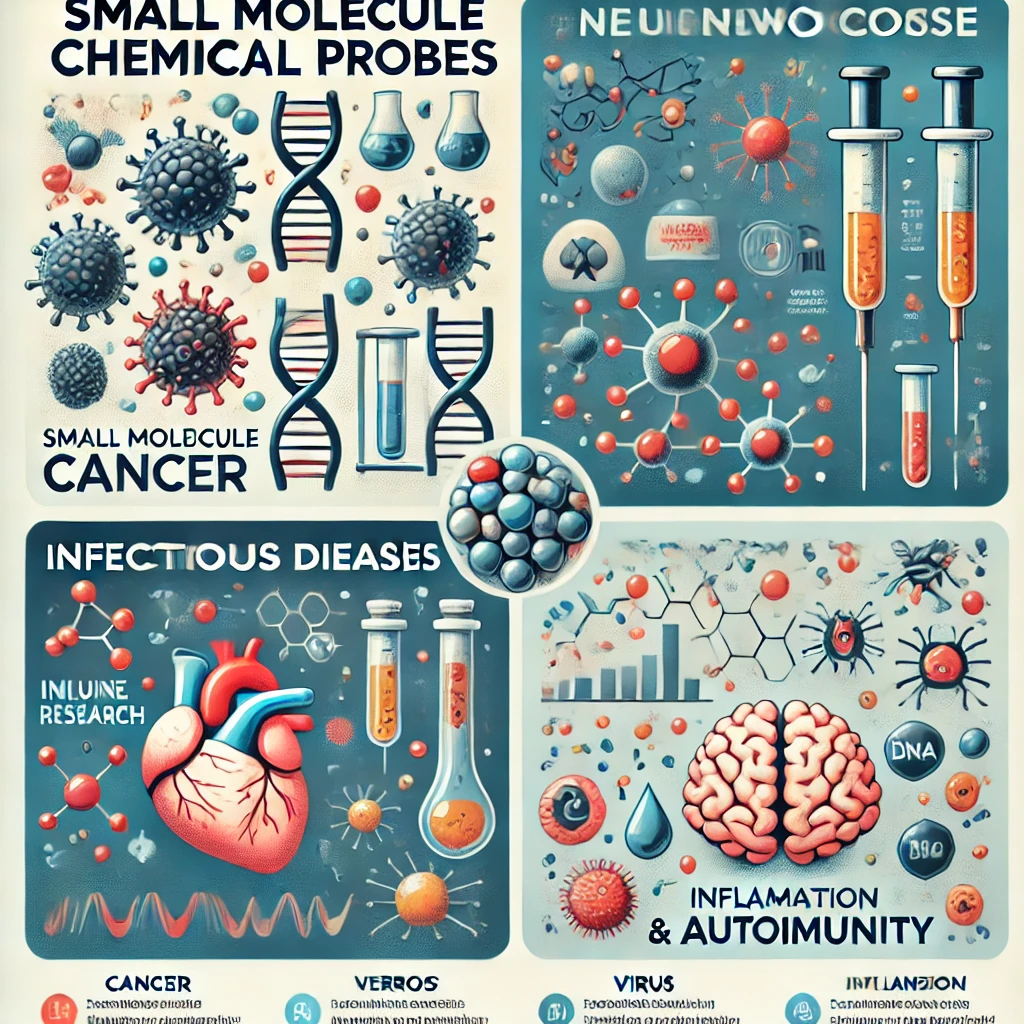
Cancer Research
Chemical probes like JQ1 and THZ1 are widely used to study oncogenic pathways and epigenetic regulators. These molecules help identify vulnerabilities in tumor cells, paving the way for targeted therapies that avoid the harsh side effects of traditional chemotherapy.
Neuroscience
Probes that affect kinases, ion channels, or neurotransmitter receptors are critical for dissecting complex neural circuits. They provide insight into disorders like Alzheimer’s disease, Parkinson’s, and epilepsy, helping scientists understand disease progression and potential therapeutic strategies.
Infectious Diseases
Chemical probes are used to explore host-pathogen interactions and immune signaling. For example, inhibitors of NF-κB or caspases help reveal how immune cells respond to bacterial or viral infections — crucial knowledge for vaccine development and antiviral therapies.
Inflammation & Autoimmunity
By targeting enzymes and transcription factors involved in inflammation, chemical probes guide the discovery of anti-inflammatory agents. Tools like VX-765 are valuable for studying inflammasomes and cytokine signaling in diseases like rheumatoid arthritis or lupus.
Best Practices for Using Chemical Probes in Research
Using chemical probes effectively requires more than just picking a molecule from a database. Even high-quality probes can produce misleading results if used improperly. To ensure robust, reproducible research, scientists must follow best practices grounded in selectivity, validation, and experimental design.
1. Choose the Right Probe for the Right Question
Always select a probe with:
High potency (typically <100 nM)
Proven selectivity for the target (minimal off-target activity)
Cell permeability and metabolic stability
2. Validate the Target
Use orthogonal methods (e.g., CRISPR, siRNA, or a structurally unrelated probe targeting the same protein) to confirm that the observed phenotype is truly due to modulation of your target.
3. Dose Responsibly
Use the lowest effective concentration to avoid off-target effects. Always run dose-response curves and include proper controls (vehicle-only, inactive analogs).
4. Replicate and Compare
Where possible, compare multiple probes against the same target. This helps rule out chemical artifacts and reinforces biological conclusions.
5. Avoid “Bad Probes”
Many commercial compounds marketed as inhibitors are non-selective or poorly characterized. Avoid probes flagged as “not recommended” on curated portals — they can skew your entire experiment.
Emerging Trends and Future Directions
The field of small molecule chemical probes is evolving rapidly, fueled by advancements in AI, data science, and systems biology. As research needs grow more complex, so too does the design and application of these powerful tools.
AI-Driven Probe Discovery
Artificial intelligence is reshaping how probes are discovered and optimized. Machine learning algorithms can now predict protein-ligand interactions, model binding sites, and even suggest novel probe structures — drastically reducing development time.
Integration with Multi-Omics Platforms
Chemical probes are increasingly used alongside transcriptomics, proteomics, and metabolomics to understand their broader impact on biological systems. This holistic approach helps identify off-target effects, uncover compensatory pathways, and drive systems-level insights.
Miniaturized & Multiplexed Screening
High-throughput screening is becoming more efficient thanks to microfluidics and robotic automation. Researchers can now test thousands of probes across multiple cell types or conditions in a fraction of the time.
Probes for “Undruggable” Targets
New probe scaffolds are being engineered to reach previously inaccessible proteins, such as transcription factors or intrinsically disordered regions. These breakthroughs are opening new therapeutic frontiers.
Open Science & Collaborative Development
The rise of consortia like the Structural Genomics Consortium (SGC) has made it easier than ever for researchers worldwide to access and co-develop non-proprietary, high-quality probes — accelerating innovation in an open, transparent way.
Conclusion: The Precision Tools Powering Modern Biology
Small molecule chemical probes have quietly revolutionized biomedical research. These precision tools offer a fast, reversible, and highly targeted way to explore protein function, validate therapeutic targets, and decode complex biological pathways — all without permanent genetic changes.
From oncology to immunology, neuroscience to infectious disease, probes are helping scientists answer some of the most critical questions in biology. Their role in preclinical research, target discovery, and systems biology makes them a key component in the roadmap to precision medicine.
But the power of chemical probes lies not just in their chemistry — it’s in how they are used. Following best practices, using validated resources, and integrating new technologies like AI will ensure that probes continue to deliver insights that drive innovation forward.
References
Vu V, Szewczyk MM, Nie DY, Arrowsmith CH, Barsyte-Lovejoy D. Validating Small Molecule Chemical Probes for Biological Discovery. Annu Rev Biochem. 2022 Jun 21;91:61-87. doi: 10.1146/annurev-biochem-032620-105344. Epub 2022 Apr 4. PMID: 35363509.
https://www.annualreviews.org/content/journals/10.1146/annurev-biochem-032620-105344
Dogra A, Li F. Small-molecule chemical probes for the potential therapeutic targets in alcoholic liver diseases. Liver Res. 2023 Sep 12;7(3):177-188. doi: 10.1016/j.livres.2023.09.001. PMID: 39958379; PMCID: PMC11792063.
Mader MM, Rudolph J, Hartung IV, Uehling D, Workman P, Zuercher W. Which Small Molecule? Selecting Chemical Probes for Use in Cancer Research and Target Validation. Cancer Discov. 2023 Oct 5;13(10):2150-2165. doi: 10.1158/2159-8290.CD-23-0536. PMID: 37712569.
Nixon G, Rahman KM, Spencer J. Introduction to ‘Medicinal Chemistry Small Molecule Probes’. RSC Chem Biol. 2024 Mar 25;5(5):395-396. doi: 10.1039/d4cb90005g. PMID: 38725914; PMCID: PMC11078211.
https://pubs.rsc.org/en/content/articlehtml/2024/cb/d4cb90005g
Riege D, Herschel S, Fenkl T, Schade D. Small-Molecule Probes as Pharmacological Tools for the Bone Morphogenetic Protein Signaling Pathway. ACS Pharmacol Transl Sci. 2023 Oct 27;6(11):1574-1599. doi: 10.1021/acsptsci.3c00170. PMID: 37974621; PMCID: PMC10644459.
https://pubs.acs.org/doi/abs/10.1021/acsptsci.3c00170
Müller S, Sanfelice D, Workman P. Probing cancer with small-molecule tools-Progress and challenges. Cancer Cell. 2025 Mar 10;43(3):323-327. doi: 10.1016/j.ccell.2025.02.003. Epub 2025 Feb 27. PMID: 40020670.
https://www.cell.com/cancer-cell/abstract/S1535-6108(25)00055-8

